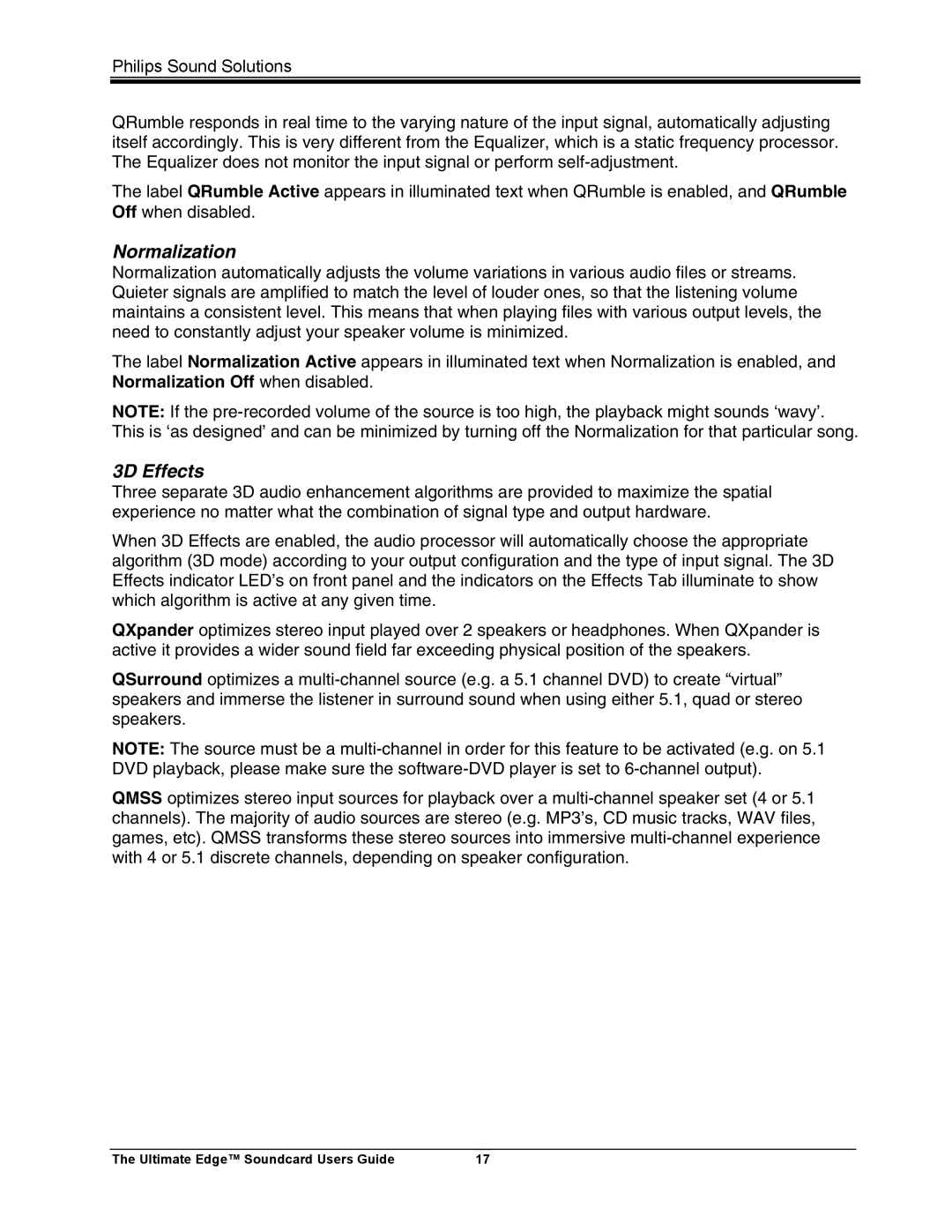
Philips Sound Solutions
QRumble responds in real time to the varying nature of the input signal, automatically adjusting itself accordingly. This is very different from the Equalizer, which is a static frequency processor. The Equalizer does not monitor the input signal or perform
The label QRumble Active appears in illuminated text when QRumble is enabled, and QRumble Off when disabled.
Normalization
Normalization automatically adjusts the volume variations in various audio files or streams. Quieter signals are amplified to match the level of louder ones, so that the listening volume maintains a consistent level. This means that when playing files with various output levels, the need to constantly adjust your speaker volume is minimized.
The label Normalization Active appears in illuminated text when Normalization is enabled, and Normalization Off when disabled.
NOTE: If the
3D Effects
Three separate 3D audio enhancement algorithms are provided to maximize the spatial experience no matter what the combination of signal type and output hardware.
When 3D Effects are enabled, the audio processor will automatically choose the appropriate algorithm (3D mode) according to your output configuration and the type of input signal. The 3D Effects indicator LED’s on front panel and the indicators on the Effects Tab illuminate to show which algorithm is active at any given time.
QXpander optimizes stereo input played over 2 speakers or headphones. When QXpander is active it provides a wider sound field far exceeding physical position of the speakers.
QSurround optimizes a
NOTE: The source must be a
QMSS optimizes stereo input sources for playback over a
The Ultimate Edge™ Soundcard Users Guide | 17 |
